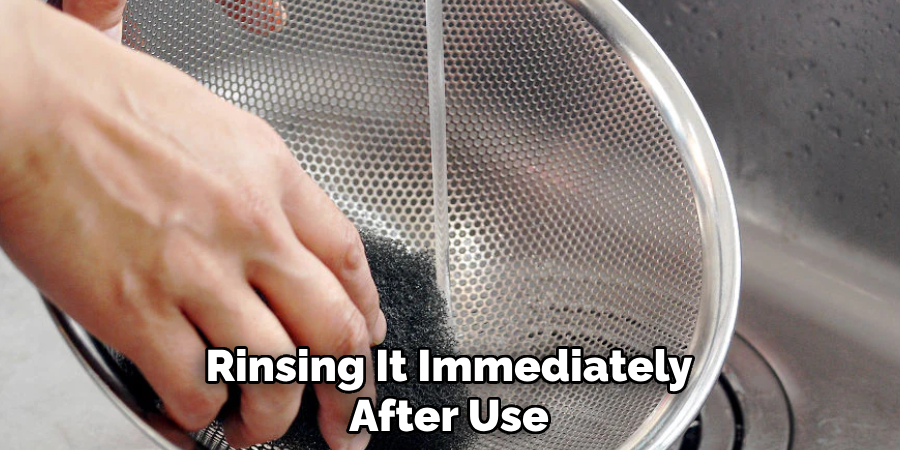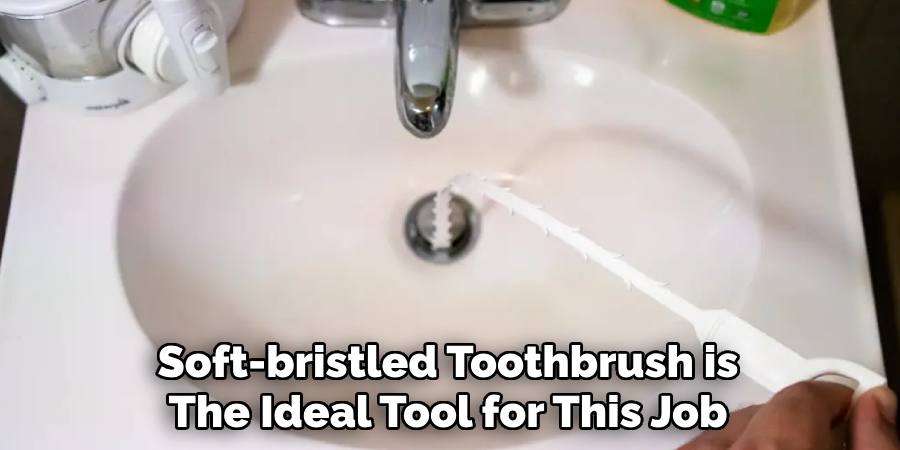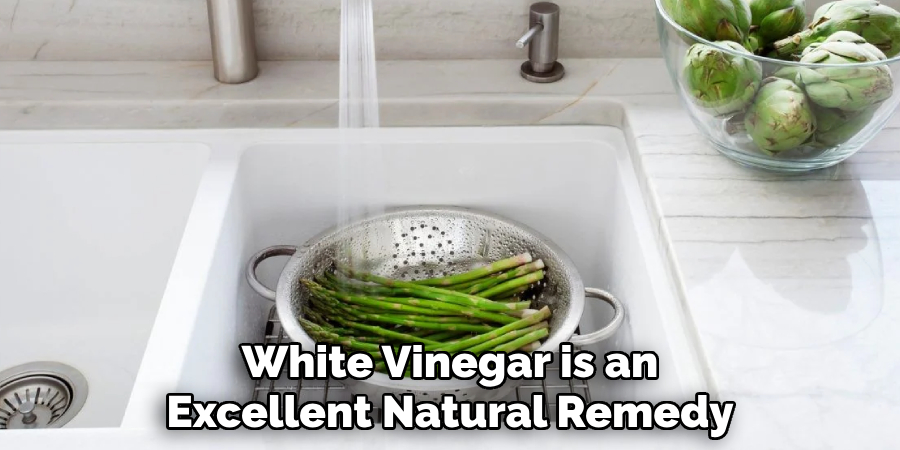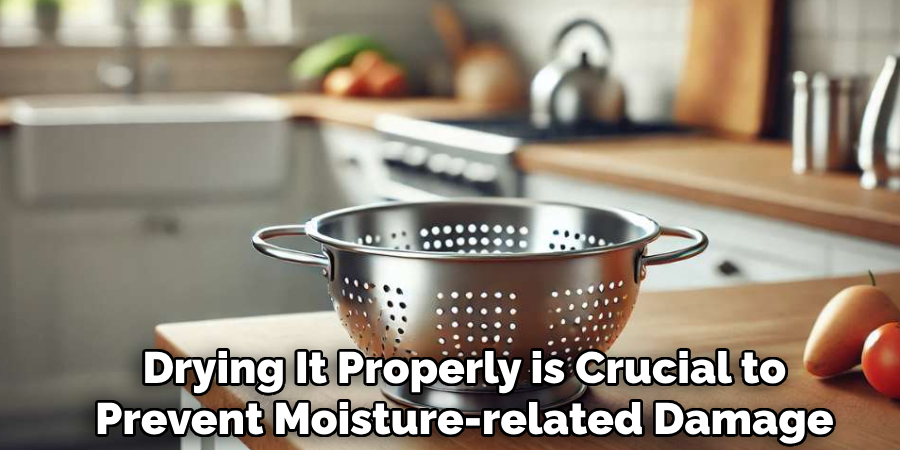Keeping your ceramic colander clean is essential for maintaining its appearance and ensuring its longevity. Whether you use it to rinse fruits, wash vegetables, or drain pasta, regular cleaning prevents stains, residue buildup, and potential odors.

With just a few simple steps, you can keep your ceramic colander looking pristine and ready for everyday use. This guide explores the key aspects of how to clean a ceramic colander.
What Is a Ceramic Colander
A ceramic colander is a kitchen tool designed for straining and rinsing various foods, such as fruits, vegetables, pasta, and grains. Made from durable ceramic materials, these colanders are both functional and aesthetically pleasing, often doubling as serving dishes due to their elegant designs. Unlike metal or plastic colanders, ceramic colanders are non-reactive, making them safe for handling acidic foods like tomatoes or citrus fruits.
Their sturdy construction ensures they remain stable during use, while the smooth, glazed surface makes them easy to clean and resistant to staining. Combining practicality with style, ceramic colanders are a versatile addition to any kitchen.
Importance of Cleaning Ceramic Gently
Ceramic is a delicate material that, while durable, can be prone to scratches, chips, and cracks if not handled properly. Cleaning your ceramic colander gently is crucial to preserve its smooth surface and aesthetic appeal. Harsh scrubbing or the use of abrasive cleaning materials can damage the glaze, making the colander more susceptible to stains and wear over time.
By using soft sponges, mild detergents, and avoiding vigorous scrubbing, you ensure that the ceramic remains in excellent condition, prolonging its lifespan and maintaining its elegant look. Gentle cleaning also helps to prevent accidental breakage, ensuring your colander remains both functional and beautiful for years to come.
10 Methods How to Clean a Ceramic Colander
1. Rinse Immediately After Use to Prevent Staining
The simplest and most effective habit you can develop for keeping a ceramic colander clean is rinsing it immediately after use. When you’ve finished straining pasta or rinsing berries, leftover starch, seeds, or juices can dry onto the surface, leading to stubborn stains or crusted residue.

By rinsing the colander under warm water right away, you prevent debris from hardening and reduce the need for scrubbing later. Use your fingers or a soft sponge to guide particles through the drainage holes. Quick action saves time and protects the ceramic glaze from discoloration.
2. Use Warm Soapy Water for Routine Cleaning
For daily maintenance, a simple solution of warm water and mild dish soap is your best friend. Fill your sink or a basin with soapy water and submerge the ceramic colander. Use a soft sponge or cloth to gently scrub the inside, outside, and around the drainage holes.
Be sure to get into the ridges or textures if your colander is hand-carved or intricately glazed. Avoid using overly hot water, which can shock the ceramic and cause cracks—especially if the colander was recently in the refrigerator. Rinse thoroughly and air-dry or towel-dry with a lint-free cloth.
3. Avoid Abrasive Scrubbers and Harsh Cleaners
While you might be tempted to reach for a steel wool pad or a scouring powder to remove stuck-on food, ceramic glaze—though tough—is not invincible. Abrasive scrubbers can dull the finish, scratch the surface, and even wear away decorative elements. Instead, use soft-bristled brushes or non-scratch sponges.
Likewise, avoid harsh chemical cleaners like bleach or ammonia, which can react with the glaze and alter its color or finish. For tougher messes, patience with milder cleaning methods always yields better long-term results.
4. Use a Toothbrush for Cleaning Drainage Holes
One of the most challenging parts of cleaning a ceramic colander is getting into the small drainage holes where bits of food or residue can lodge. A clean, soft-bristled toothbrush is the ideal tool for this job.
Dip the toothbrush in soapy water and scrub around the holes, using circular motions to dislodge particles. If residue is dried or stubborn, let the colander soak for 15–30 minutes before brushing. This method is especially useful for colanders with tight or decorative patterns where traditional sponges can’t reach.

5. Soak in a Baking Soda Solution for Odor or Stains
Sometimes, a ceramic colander can retain odors or discoloration from strong foods like onions, berries, or tomato sauces. In these cases, a baking soda soak can be a gentle but powerful solution.
Fill the sink with warm water and add 2–3 tablespoons of baking soda. Submerge the colander and let it soak for 30 minutes to an hour. Afterward, use a sponge to scrub the surface lightly. Baking soda neutralizes odors and lifts surface stains without damaging the glaze. This method leaves your colander fresh-smelling and stain-free.
6. Remove Tough Stains with a Paste of Baking Soda and Water
For concentrated spot-cleaning of stubborn stains, mix baking soda with a small amount of water to create a thick paste. Apply the paste directly to stained areas and let it sit for 10–15 minutes.
Using a soft cloth or sponge, gently scrub the area in small circles. This approach allows for targeted stain removal without affecting the rest of the surface. Afterward, rinse thoroughly with clean water and dry. This method is especially effective on light-colored ceramic colanders where berry or vegetable stains may be more noticeable.
7. Try Vinegar for Mineral Deposits or Soap Scum
If your ceramic colander develops a cloudy residue from hard water or soap buildup, white vinegar is an excellent natural remedy. Mix equal parts vinegar and warm water and soak the colander for 20–30 minutes.
For extra cleaning power, you can add a tablespoon of baking soda after soaking to create a gentle fizzing action. Vinegar breaks down mineral deposits and restores shine to the ceramic glaze. Rinse the colander thoroughly afterward to eliminate the vinegar smell and dry with a soft towel.

8. Clean Dishwasher-Safe Colanders Carefully
Some ceramic colanders are labeled dishwasher-safe, but it’s essential to check the manufacturer’s instructions before placing them in the machine. If deemed safe, place the colander on the top rack and avoid overcrowding, which can lead to chipping or cracking during the wash cycle. Use a gentle or eco-cycle with mild detergent. Even for dishwasher-safe ceramics, it’s best to hand-wash regularly to preserve the glaze and prevent wear over time. When in doubt, washing by hand is always the safer and more controlled option.
9. Disinfect Naturally with Lemon Juice
If you’re concerned about germs—especially after rinsing raw produce—natural disinfectants like lemon juice can offer an effective, chemical-free solution. Simply rub a cut lemon directly onto the ceramic surface, letting the juice coat the inside and outside of the colander. Let it sit for 10–15 minutes before rinsing with warm water.
The citric acid not only kills bacteria but also brightens stained spots and adds a fresh scent. This method is gentle on glazes and particularly effective for decorative or artisanal colanders that shouldn’t be exposed to chemical cleaners.
10. Dry Thoroughly to Prevent Moisture Damage
Once your ceramic colander is clean, drying it properly is crucial to prevent moisture-related damage like mold buildup or glaze crazing. Let it air-dry upside down on a clean rack or dry it with a lint-free cotton towel.
Avoid storing it while even slightly damp, especially if it nests inside other ceramic pieces. Long-term exposure to trapped moisture can cause deterioration at the base or encourage mildew in the drainage holes. Proper drying not only keeps your colander hygienic but also preserves its structural and aesthetic integrity.
Things to Consider When Caring for Ceramic Colanders
- Handling with Care: Ceramic colanders can be fragile, so always handle them gently to avoid chips or cracks. When washing, avoid using abrasive scrubbers that can damage the glaze.
- Proper Storage: Store your colander in a secure spot where it won’t be at risk of falling or getting knocked over. If stacking with other pieces, place a soft liner between layers to protect the surface.
- Temperature Changes: Avoid exposing your colander to sudden temperature extremes, such as pouring boiling water into a cold colander, as this can cause thermal shock and cracking.
- Regular Inspection: Periodically check for any signs of wear, such as hairline cracks or glaze flaws, as these can worsen with use and compromise the integrity of the colander.

Conclusion
A ceramic colander is more than just a functional kitchen tool—it’s a piece of craftsmanship that deserves care and respect. By adopting gentle but thorough cleaning habits, you ensure that your colander remains as beautiful as it is practical.
Whether you’re rinsing berries in the summer or draining pasta on a weeknight, these ten cleaning methods—from quick rinses to deep stain treatments—will keep your ceramic colander pristine, safe, and ready for daily use. Thanks for reading, and we hope this has given you some inspiration on how to clean a ceramic colander!
Specialization:
- Master of wheel-throwing, hand-building, and advanced glazing techniques
- Focus on creating both functional pottery and decorative art pieces
Recognition:
- Celebrated by collectors and art enthusiasts for creating one-of-a-kind pieces that blend artistry with functionality
- Participates in local and national exhibitions, earning accolades for his innovative designs and craftsmanship
Passion:
- Deeply committed to exploring and pushing the boundaries of ceramic artistry
- Continuously experiments with new materials, firing techniques, and artistic concepts to evolve his craft
Personal Philosophy:
- Believes in the transformative power of art, aiming to evoke emotions and connections through his ceramic creations
- Advocates for sustainability in ceramics, using eco-friendly materials and practices whenever possible


